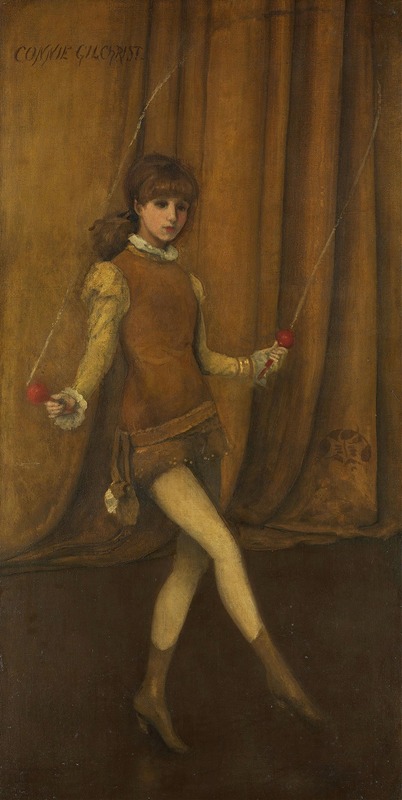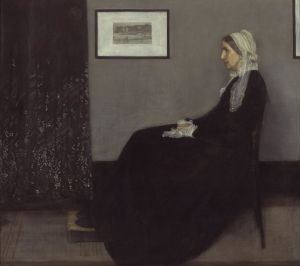
Harmony in Yellow and Gold-The Gold Girl—Connie Gilchrist
A hand-painted replica of James Abbott McNeill Whistler’s masterpiece Harmony in Yellow and Gold-The Gold Girl—Connie Gilchrist, meticulously crafted by professional artists to capture the true essence of the original. Each piece is created with museum-quality canvas and rare mineral pigments, carefully painted by experienced artists with delicate brushstrokes and rich, layered colors to perfectly recreate the texture of the original artwork. Unlike machine-printed reproductions, this hand-painted version brings the painting to life, infused with the artist’s emotions and skill in every stroke. Whether for personal collection or home decoration, it instantly elevates the artistic atmosphere of any space.
"Harmony in Yellow and Gold: The Gold Girl—Connie Gilchrist" is a painting by the American-born, British-based artist James Abbott McNeill Whistler. Whistler, known for his innovative approach to art and his influence on the Aesthetic Movement, created this work during a period when he was deeply engaged in exploring the interplay of color and form.
The painting features Connie Gilchrist, a well-known actress and performer of the late 19th century. Gilchrist was a popular figure in London’s theatrical scene, and her presence in Whistler's work reflects the artist's interest in contemporary culture and society. Whistler often chose subjects from the world of theater and performance, capturing the vibrancy and dynamism of his time.
In "Harmony in Yellow and Gold," Whistler employs a limited palette dominated by shades of yellow and gold, demonstrating his mastery of color harmony. This choice of color not only highlights the subject but also creates a sense of warmth and luminosity. Whistler's technique involves delicate brushwork and a subtle gradation of tones, which contribute to the painting's overall sense of elegance and refinement.
The composition of the painting is carefully balanced, with Gilchrist positioned in a way that draws the viewer's eye to her expressive pose and the flowing lines of her attire. Whistler's attention to detail is evident in the rendering of textures, from the softness of the fabric to the sheen of the gold accents. This meticulous approach is characteristic of Whistler's style, which often emphasized the aesthetic qualities of his subjects over narrative content.
Whistler's work during this period was heavily influenced by his belief in "art for art's sake," a principle that prioritized beauty and visual experience over storytelling or moral messages. "Harmony in Yellow and Gold" exemplifies this philosophy, as it focuses on the visual impact of color and form rather than conveying a specific narrative.
The painting is part of Whistler's broader exploration of the concept of "harmony" in art, where he sought to create a sense of balance and unity through the careful arrangement of visual elements. This approach is evident in many of his works, where he often used musical terms in the titles to emphasize the parallels between visual art and music.
"Harmony in Yellow and Gold: The Gold Girl—Connie Gilchrist" is a testament to Whistler's innovative spirit and his contribution to the development of modern art. His work has had a lasting impact on the art world, influencing subsequent generations of artists who sought to break away from traditional constraints and explore new forms of expression.
Today, Whistler's paintings are celebrated for their beauty and technical skill, and "Harmony in Yellow and Gold" remains an important example of his artistic vision. The painting is held in high regard by art historians and continues to be studied for its aesthetic qualities and its place within the broader context of Whistler's oeuvre and the Aesthetic Movement.


















